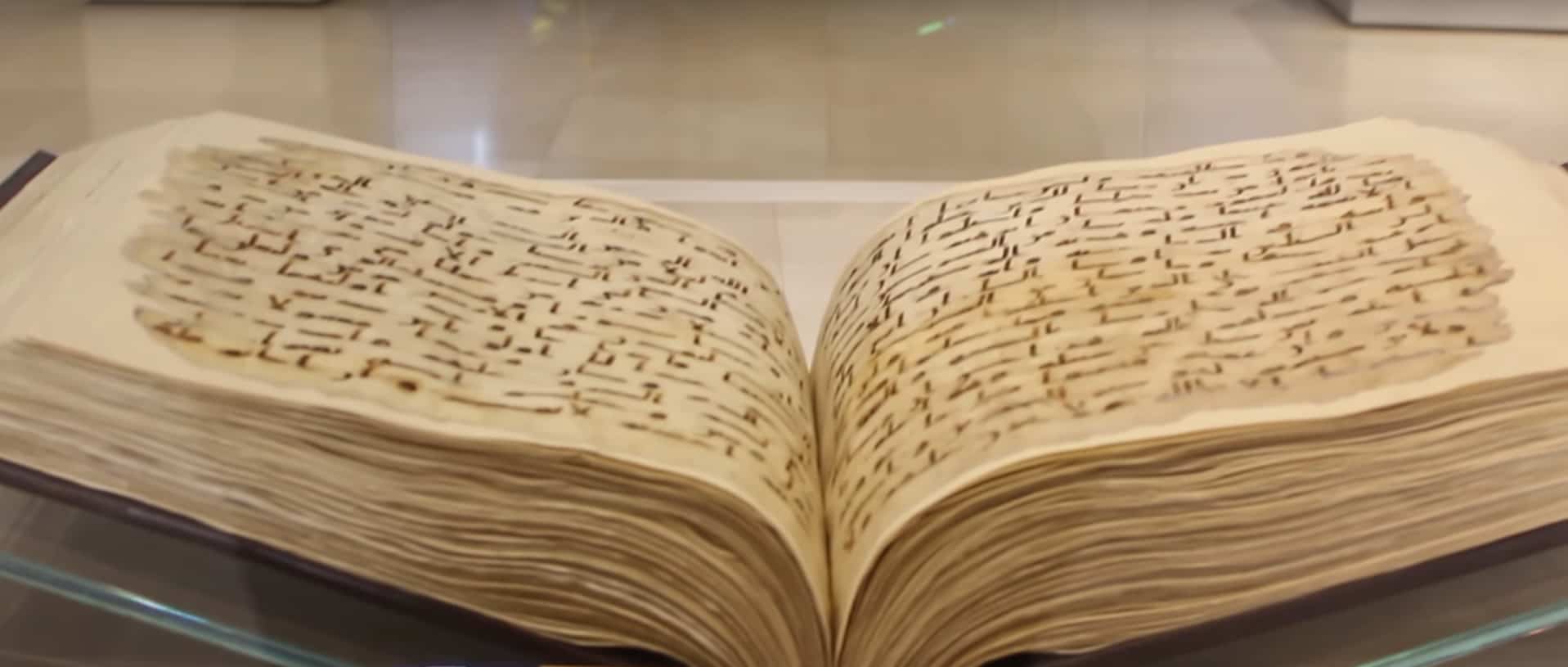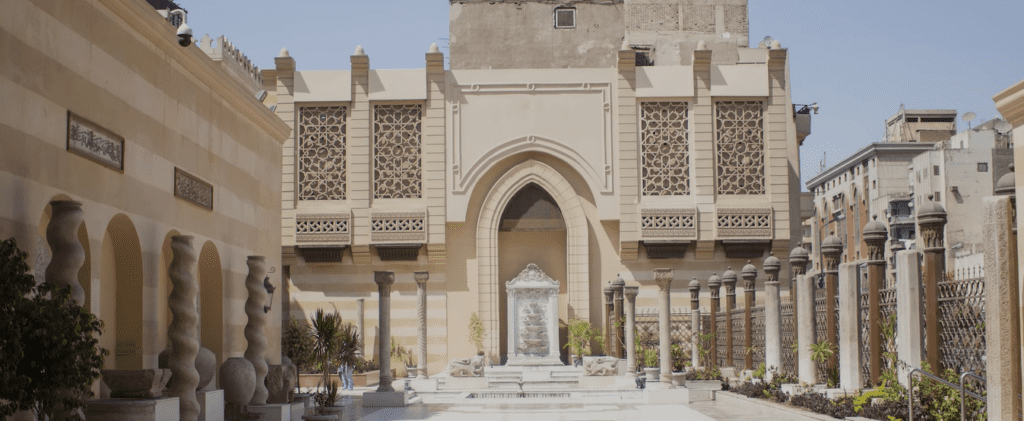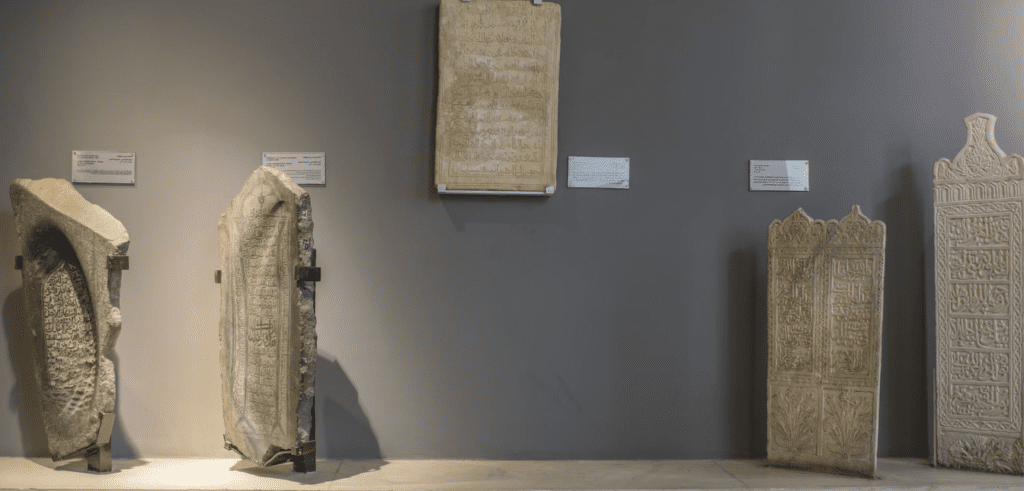History Assorted in Cairo’s Islamic Art Museum

Updated On: April 15, 2024 by ConnollyCove
Cairo is the landmark of many of the world’s historical Islamic sites and monuments. Whether splendid palaces like Muhammed Ali’s Palace or vast gardens like Orman Garden, Cairo has everything. The world’s most extensive collection of Islamic art is available to display to everyone. Cairo’s Islamic Art Museum (or the MIA) was officially opened in 2010 after nearly a decade of renovations. From arms to metalworks to ancient Qurans, many thousands of artefacts from all over the Islamic World are housing this historic collection. With new lighting and displays in each of the 25 halls, officials say this museum is unlike any other in Egypt.
History of Islamic Art Museum
The very beginning of The Islamic Art Museum was with Max Hurts. He was an architect in the Ministry of Awqaf and decided to establish the museum’s origins as a small museum called The House of Arab Antiquities in Al-Hakim Mosque on Al Moez Street. After that, he requested the Ministry of Awqaf to put an enormous museum in Bab El Louk Square, and they accepted his request in 1889. It was later opened in 1903.
The Islamic Art Museum consists of three floors: A basement as a store and restoration area, the second floor for exhibitions, and the third floor was used as a big store for ceramic artefacts and a bookstore (worth noting that behind the museum, there is a building called The Arab Books House and it was opened in 2007.)
The museum’s collection was tiny, only 4000 pieces at its opening. After that period, during the next 70 years, the number of collections increased tremendously through excavations, purchasing of artefacts from outside, and some donations from the mother of Khedive Ismail. So, the collection now has over 100,000 artefacts.
The Overhaul of Islamic Art Museum
After 100 years, in 2003, the building became very weak. The building’s pillars started to collapse, and it was a massive problem for the Supreme Council and the Ministry of Culture. When they began renovations, they faced many difficulties; once they had solved an issue, another one came up. The foundations of the building, columns, and walls were all crumbling down.
However, the Egyptians knew their way around, and these issues were incentives for them to figure out ways to renew the exterior outlay of the building. Then, they started working on the interior design of the showcases. The most essential thing in the museum was that the interior design focused on exhibiting the artefacts in a modern, elegant way. A considerable amount of work had to be done.
Crisis and Recovery of Islamic Art Museum
Sadly, in 2014, The Islamic Art Museum sustained severe damage when a car bomb exploded outside the adjacent Cairo Security Directorate building. The blast destroyed the facade of the building, several columns, display cases and artefacts, and the nearby Egyptian National Library and Archives building.
It reopened in January of this year after a three-year restoration programme funded by the United Arab Emirates and UNESCO, the cultural arm of the United Nations, Switzerland, the United States and Italy.
The Different Eras of the Islamic Art Museum

The Islamic Art Museum hosts a wealth of artefacts that include some of the rarest pieces of wood carvings, ceramics, textiles, manuscripts, as well as gold jewellery from the Umayyad, Abbasid, Tulunid, Fatimid, Ayyubid, Mamluk, and Ottoman periods.
Umayyad
Historians often see The Umayyad period as the most constructive period in Islamic art. Artists kept working seamlessly and formed great art, even after taking up Arabic and Islam as the official doctrines of the state. Artists took no shame in adapting well-known forms of art from the outside. The other crucial part was related to the demands of the new faith: the religious conceptions of human life and purpose, the nature of the divine, the social bond and sociopolitical organization as determined by the holy will and the divine plan for humanity.
Artists, artisans, and architects were challenged to give form and expression. They created new values and ideas for their art and gave Islamic art a unique identity.
The Abbasids
After the fall of the Ummayad Caliphate in 750 AD, the Abbasid dynasty took the Muslim empire’s throne. The first caliph of the new dynasty, Abu Abbas As-Saffah, brought the capital city of the Islamic empire from Damascus to Baghdad. During this time, with the rise of another dynasty named the Caliphate of Cordoba in Spain, Islam undertook what’s historically known as the Golden Age.
The Abbasid era in Islamic history spanned from 750 to 1258. This period is noteworthy for Islamic rule from Syria to Iraq and the founding of the capital city of Baghdad in 762.
“‘A second major city, Samarra, also briefly became the capital some years later. During the Abbasid era, Baghdad and Samarra were the cultural hubs of the Islamic world, and artwork and architecture produced during this golden age are distinctive in their style and influences. Since the style set by the capital was used throughout the Muslim world, Baghdad and Samar”’ became associated with the new artistic and architectural tren’Samarra, A second major city, also briefly became the capital some years later. During the Abbasid era, Baghdad and Samarra were the cultural hubs of the Islamic world, and artwork and architecture produced during this golden age are distinctive in their style and influences. Since the style set by the capital was used throughout the Muslim world, Baghdad and Samarra’’ became associated with the new artistic and architectural trends” ‘Samarra, A second major city, also briefly became the capital some years later.
During the Abbasid era, Baghdad and Samarra were the cultural hubs of the Islamic world, and artwork and architecture produced during this golden age are distinctive in their style and influences. Since the style set by the capital was used throughout the Muslim world, Baghdad and Samarra’ became associated with the new artistic and architectural trend.’Samarra, A second major city, also briefly became the capital some years later. During the Abbasid era, Baghdad and Samarra were the cultural hubs of the Islamic world, and artwork and architecture produced during this golden age are distinctive in their style and influences. Since the style set by the capital was used throughout the Muslim world, Baghdad and Samarra’ became associated with the new artistic and architectural trends.
The Fatimids
The long period of Fatimid rule, lasting almost three centuries, and the dynasty’s political and ideological principles brought a significant art revival. The monuments of the period deliver a sheer and evident presence of the art of the era, with their many new or additional features deriving from the traditions and cultures of the locations where they were distributed.
Fatimid art, particularly textiles, ceramics, carved rock crystal, and metalwork, has been admired for centuries. European merchants and crusaders initially took these artworks. Then, they were later preserved as relics in museums (like The Islamic Art Museum many centuries later) and churches.
The Ayyubids
The Ayyubid dynasty came to power under the leadership of the Kurdish Zengid general Salah al-Din, known in Europe as Saladin. In the arts, the Ayyubids are known primarily for their works in inlaid metalwork and ceramics. Some objects from this period, including a group of inlaid metalwork pieces, also have Christian scenes.
The Mamluks
Following the Ayyubid state in 1250 AD, the Mamluk sultans established a formidable empire, ruling Egypt, Syria, and Palestine for more than two hundred and fifty years, their frontiers extending from southeastern Anatolia to the Hijaz and incorporating parts of Sudan and Libya. The exquisite illuminations, calligraphy, and bindings of Mamluk Qurans are unequalled in any other Islamic tradition of bookmaking.
The technical and artistic virtuosity in these manuscripts is representative of the Mamluks, who, embracing Islam with the fervour of converts, endowed elaborate religious complexes and supplied each major foundation with its set of Qurans.
The Ottomans
With the conquest of the Mamluk empire in 1517, the Ottomans ruled over the most powerful state in the Islamic world. In the arts, existing objects from the early Ottoman period are inadequate. Still, it is apparent from surviving buildings that Byzantine, Mamluk, and Persian traditions were integrated to form a distinctly Ottoman artistic vocabulary.
Egypt is full of art museums and exhibitions from head to toe. The Islamic Art Museum is a must-go for anyone who desires to be fascinated by many sublime artworks of ancient and modern history.
The Islamic Art Museum is near the Downtown area, heaped with other gorgeous landmarks worth checking.
Collections and Exhibits

The Islamic Art Museum boasts an extensive collection of over 100,000 artefacts, ranging from ceramics and metalwork to textiles and manuscripts. These artefacts are meticulously curated and organized into thematic exhibits that showcase the diversity and complexity of Islamic art and culture.
One of the museum’s most renowned collections is its assortment of ceramics, which includes pieces from various regions and periods of Islamic history. Visitors can marvel at the vibrant colours and intricate patterns of Persian tiles, admire the delicate beauty of Ottoman porcelain, and explore the innovative techniques employed by Islamic potters over the centuries.
The museum’s textile collection offers a fascinating glimpse into the intricate weaving and embroidery techniques practised across the Islamic world. From luxurious silk brocades to intricately patterned carpets, these textiles reflect the diverse influences and artistic traditions that have shaped Islamic art.
In addition to its ceramics and textiles, the museum houses an impressive array of metalwork, including intricately decorated weapons, household objects, and religious artefacts. These pieces showcase the mastery of Islamic metalworkers in techniques such as engraving, filigree, and damascening, highlighting the importance of craftsmanship in Islamic artistic expression.
The Islamic Art Museum also boasts a notable collection of illuminated manuscripts featuring beautifully illustrated Qurans, scientific treatises, and literary works across the Islamic world. These manuscripts demonstrate the artistic skill of their creators and serve as valuable historical and cultural artefacts, offering insights into the intellectual and spiritual life of Islamic societies.
Preservation and Education
Beyond its role as a repository of artistic treasures, the Islamic Art Museum in Cairo is committed to preserving and promoting Islamic art and culture. Through conservation efforts and educational programs, the museum seeks to engage audiences of all ages and backgrounds, fostering an appreciation for the rich heritage of the Islamic world.
Conservation initiatives aim to safeguard the Islamic Art Museum collection for future generations, employing state-of-the-art techniques to preserve fragile artefacts and restore damaged pieces. Additionally, the Islamic Art Museum collaborates with international partners and cultural institutions to share expertise and resources, ensuring the continued integrity of its collection.
Educational programs cater to diverse audiences, offering guided tours, workshops, and lectures that explore various aspects of Islamic art and culture. School groups, scholars, and art enthusiasts benefit from curated experiences that delve into the museum’s artefacts’ historical context, artistic techniques, and symbolic significance. By fostering dialogue and understanding, these programs contribute to a broader appreciation of Islamic art’s enduring legacy.
Conclusion
The Islamic Art Museum in Cairo is a testament to the enduring legacy of Islamic art and culture. Through its diverse collection and educational initiatives, the museum serves as a gateway to the rich tapestry of artistic expression that defines the Islamic world. From intricate calligraphy to mesmerizing geometric patterns, each artefact housed within its walls invites visitors on a journey through centuries of creativity, innovation, and cultural exchange. As a beacon of preservation and education, the museum continues to inspire audiences around the globe, fostering appreciation for the beauty and complexity of Islamic art.






